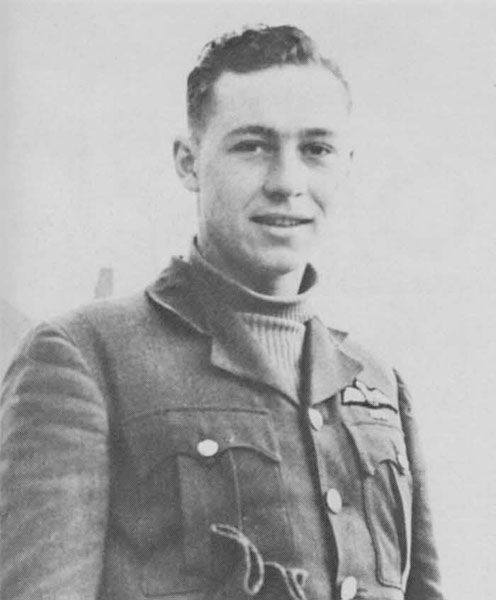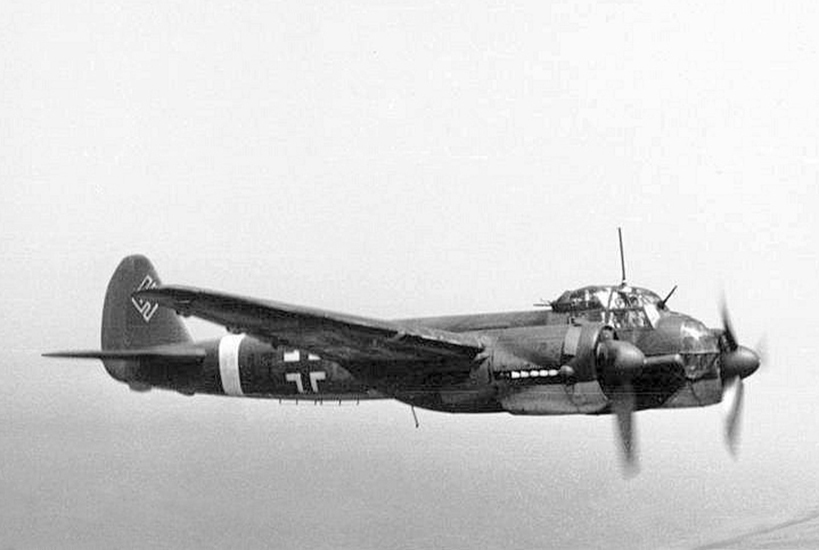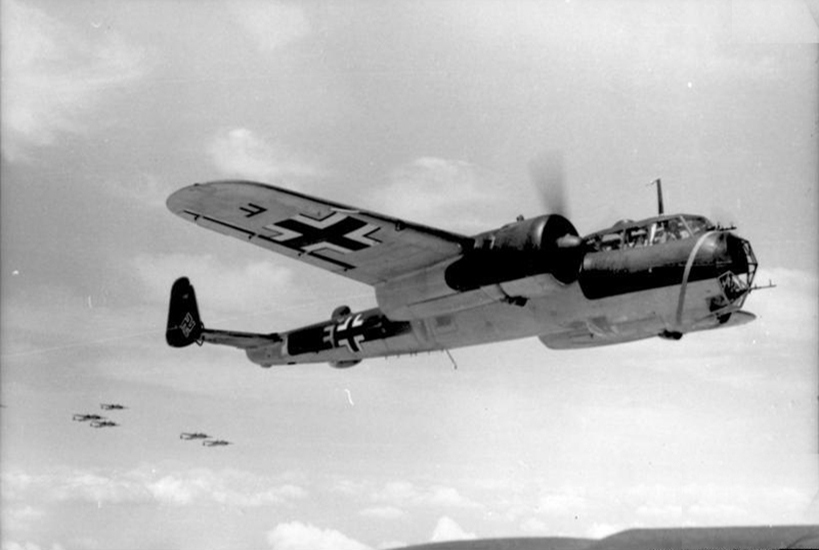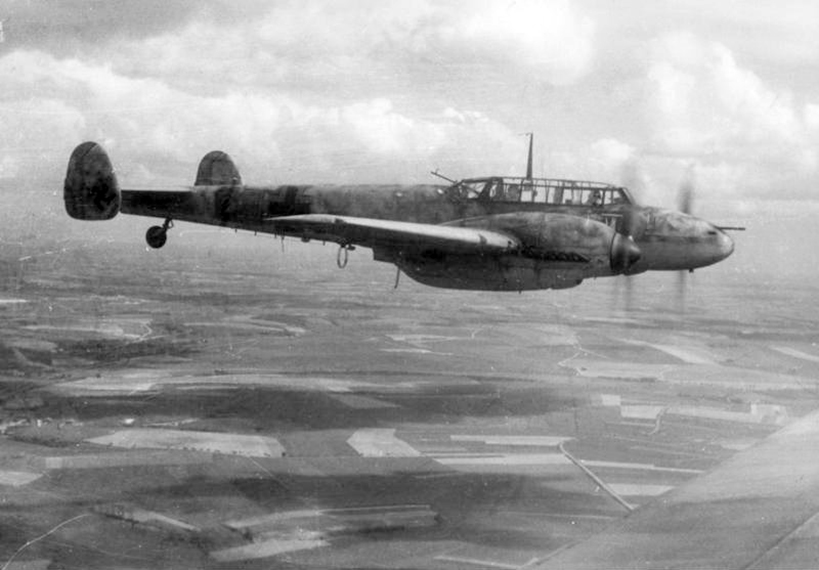McKnight, William Lidstone "Willie"
- Date of birth:
- November 18th, 1918 (Edmonton/Alberta, Canada)
- Date of death:
- January 12th, 1941 (The English Channel, France)
- Buried on:
- Air Forces Memorial Runnymede
Plot: 30. - Service number:
- 41937
- Nationality:
- Canadian
Biography
William Lidstone McKnight was shot down on January 12th, 1941 by Feldwebel Brugelmann from Jagdgeschwader 26.
Promotions:
April 15th, 1939: Acting Pilot Officer on Probation;
November 6th, 1939: Pilot Officer on probation;
February 6th, 1940: Pilot Officer;
November 6th, 1940: Flying Officer.
Career:
?: No. 6 Flying Training School (FTS), Little Rissington;
May 6th, 1940: No 242 Squadron;
May 1940: No. 615 Squadron, Abbeville, Frankrijk;
?: No 242 Squadron;
Victories:
May 19th, 1940: Messerschmitt Bf 109;
May 28th, 1940: Messerschmitt Bf 109;
May 29th, 1940: Messerschmitt Bf 109;
May 29th, 1940 (unconfirmed)): Messerschmitt Bf 109;
May 29th, 1940: Dornier Do 17;
May 31st, 1940: Messerschmitt Bf 110;
May 31st, 1940: Messerschmitt Bf 110;
June 1st, 1940: Junkers Ju 87;
June 1st, 1940: Junkers Ju 87;
June 1st, 1940 (unconfirmed): Junkers Ju 87;
June 1st, 1940 (unconfirmed): Junkers Ju 87;
August 30th, 1940: Messerschmitt Bf 119;
August 30th, 1940: Messerschmitt Bf 119;
August 30th, 1940: Heinkel He 111;
September 9th, 1940: Messerschmitt Bf 109;
September 9th, 1940: Messerschmitt Bf 109;
September 18th, 1940: Dornier Do 17;
September 18th, 1940 (shared) : Junkers Ju 88;
November 5th, 1940: Messerschmitt Bf 109.
Do you have more information about this person? Inform us!
- Period:
- Second World War (1939-1945)
- Rank:
- Pilot Officer
- Unit:
- No. 242 (Canadian) Squadron, Royal Air Force
- Awarded on:
- June 14th, 1940
"One day in May, 1940, this officer destroyed a Messerschmitt 109 and on the following day, whilst on patrol with his squadron, he shot down three more enemy aircraft. The destruction of the last one of
the three aircraft occasioned a long chase over enemy .territory. On his return flight he used his remaining ammunition, and caused many casualties, in a low flying attack on a railway along which the enemy was bringing up heavy guns. Pilot Officer McKnight has shown exceptional skill and courage as a fighter pilot."
Recommendation:
"On the 28th May, this officer destroyed a Messerschmitt 109. On the following day, whilst on patrol with his squadron, he shot down three more enemy aircraft. The last one of the three enemy aircraft was destroyed after a long chase over enemy territory. On his return flight he used his remaining ammunition and caused many casualties in a low-flying attack on a railway along which the enemy was bringing up heavy guns. Pilot Officer McKnight has shown exceptional courage and skill as a fighter pilot.
NOTE: Public Record Office Air 2/4095 has the original recommendation, apparently drafted by W/C R. Grice, Commanding Officer, RAF Station Biggin Hill, on 2 June 1940. The identity of several of his victims is confused; the victims of 1 June 1940 were more likely Ju.87s rather than Ju.88s.
Pilot Officer McKnight, a Canadian pilot, has shown exceptional skill and courage as a fighter pilot during the operations over France from 28th May to 1st June 1940.
On 28th May 1940, this officer destroyed one Messerschmitt 109 over Ostende.
On May 29th, whilst on patrol with his squadron over France, he shot down two Messerschmitt 109s and a Dornier 17. The Dornier 17 occasioned a long chase into enemy territory but the pilot with great tenacity and determination succeeded in destroying it. On the way back from this, the pilot used up the remainder of his ammunition by carrying out a low flying attack on a railway east of Dunkirk, along which the enemy were bringing up heavy guns, and caused many casualties.
On 31st May, this officer was again on patrol with his squadron and with great skill, whilst protecting the evacuation of the British Expeditionary Force from Dunkirk area, he shot down two Messerschmitt 110s.
On the afternoon of June 1st, he was again on patrol covering the evacuation of the Dunkirk beaches when his squadron encountered eighteen Junkers 88s about to attack our shipping and he succeeded in shooting down two Junkers 88s and two unconfirmed.
Between the 28th May and 1st June this officer has displayed great skill and courage and has destroyed two Messerschmitt 110s, three Messerschmitt 109s, one Dornier 17 and two Junkers 88s.
On 3 June 1940, Air Vice-Marshal Keith Park (Air Officer Commanding, No.11 Group) added the following minute:
This officer, a Canadian, has shown exceptional skill, determination and courage. He has destroyed eight enemy aircraft as well as attacking successfully heavy guns on the railway east of Dunkirk causing many casualties. I strongly recommend him for the award of the Distinguished Flying Cross."
LG 34873/3622-3623.
- Period:
- Second World War (1939-1945)
- Rank:
- Pilot Officer
- Unit:
- No. 242 (Canadian) Squadron, Royal Air Force
- Awarded on:
- October 8th, 1940
"This officer has destroyed six enemy aircraft during the last thirteen weeks. He has proved himself to be a most efficient section leader, and has consistently given proof that he is a courageous and tenacious fighter."
Second DFC awarded in the form of a bar to be worn on the ribbon of the first DFC.
LG 34964/5900.
Sources
- Photo 1: Tom MacNeill
- - Aces of WW2
- Veterans Affairs Canada
- The Battle of Britain London Monument
The London Gazette of 26th January 1940, Issue 34780, Page 530
- The London Gazette of 27th February 1940, Issue 34801, Page 1173
- The London Gazette of 14th June 1940, Issue 34873, Pages 3622-3633
The London Gazette of 8th October 1940, Issue 34964, Page 5900
- The London Gazette of 3rd December 1940, Issue 35005, Page 6862






